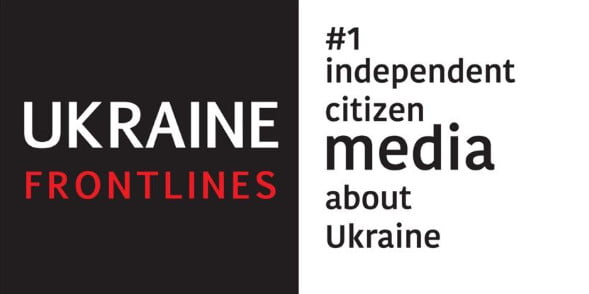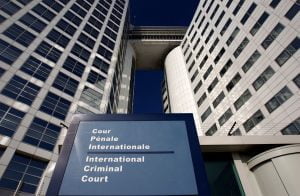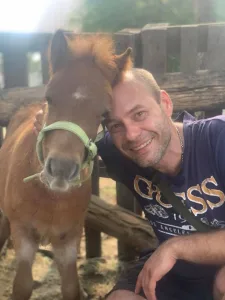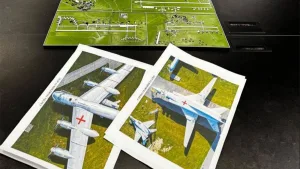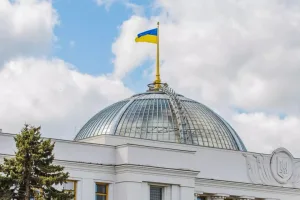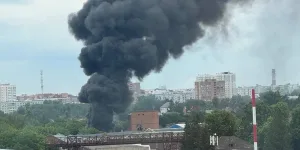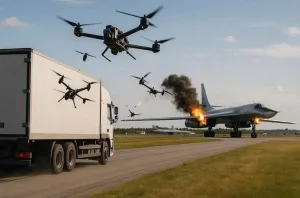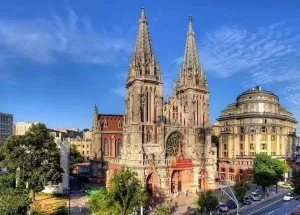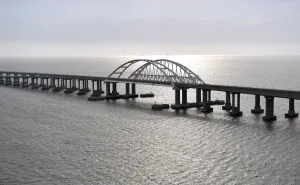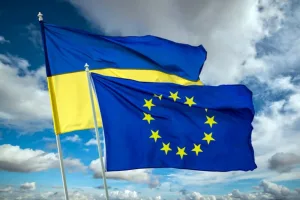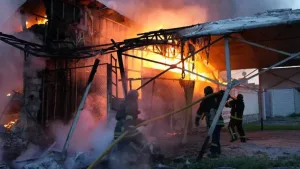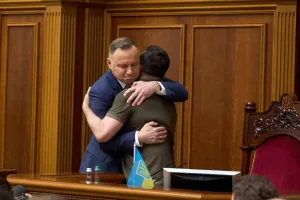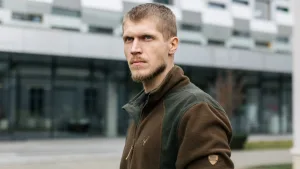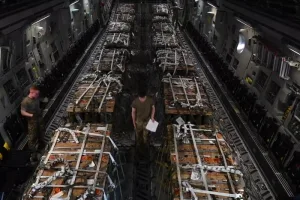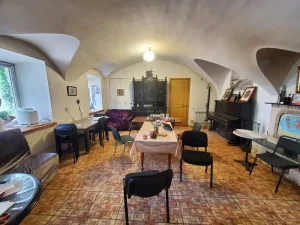As she speaks about Mariupol, with affection and concern over its fate, one may get a feeling it’s her native city. However Valentyna Okhlopkova is a Kyivite. She was one of the first activists to come to Crimea last year. She is the brain behind the exhibition “Mariupol – the city that is defending itself” open at the Kyiv Fortress. EMPR met Valentyna amid the exhibits to talk about Mariupol and the people who feel for it.
We meet Valentyna at the entrance to the Kosyi Kaponir – XIX century fortification, part of the Kyiv Fortress hosting the exhibition. We get inside and walk along the corridor that brings us to the dimly-lit round room, one third of which narrates the Mariupol defense.
“A friend of mine, a journalist, invited me to come with her to the base of Azov [regiment – edit.] in Urzuf. Mariupol is very close, we were driving back and forth all the time, and I was constantly coming across pro-Ukrainian rallies in Mariupol,” Valentyna, or Valya as friends call her, explains us her acquaintance with Mariupol as we stand in front of the photos that make up the exhibition’s opening section.
“I was taking a lot of pictures, and they turned to be beautiful. Although at that moment I had no idea why I was making them,” she continues. Everything fell into place when the activist learnt of the ongoing exhibition preparations.
The idea to set up an exhibition on Mariupol came when then-commander of the M sector – Mariupol area General Serhiy Popko passed to the museum several boxes with fragments of ammunition, photographs and children’s paintings, says Valya. These items were not really enough for a full-fledged exhibition, she continues. “Then my friends approached me. They said: you go to Mariupol quite often, can you help find some more?”
The exhibition starts with the photos that directly or indirectly refer to the enemy’s presence in and outside of the city. Liberated from Russian-backed militants last June Mariupol has witnessed several dramatic events. The photo that immediately captures the sight shows a lifeless human body wrapped in a blue blanket referring to the tragic episode last October when a rocket launched from a militant-held area hit a funeral procession in the nearby village of Sartana killing 7 civilians. Fragments of ammunition lying on the floor intensify the impression over the moments captured on the pictures. Other photos mostly portray the routines of Ukrainian soldiers and date back to last autumn.
Most visible and eye-capturing exhibit at the next section is the orange and black separatist flag in the colours of the St. George’s ribbon. It is a trophy Valya was lucky to bring from militant-held village of Pavlopil outside Mariupol. “I was sitting in the office of Novy Mariupol [volunteer organization – edit.] when two young activists came in. They said: “vatnyky” [slang for pro-Russian supporters – edit.] wrote on social media that they took over Pavlopil and flew their flag. We’ll go there and film the disproof,” Valya quotes the activists. She was offered to come with them and she accepted it with no hesitation. It was in the car that Valya learnt they were going to the “grey” buffer zone. The Ukrainian servicemen were not aware of the trip, neither of the passengers had body armour or first aid kits. “At the last [Ukrainian] blockpost a bodyguard called a local by phone and a crowd of elderly ladies approached us and started lamenting their life. The guys followed some “guide” to the far end of the village to take a look at the destroyed houses and unexploded ordnance,” she continues her story that starts resembling a classic beginning of a horror movie. As the old ladies started leaving and Valya found herself alone in the middle of what appeared to be a separatist-held village Valya confesses “it made her hair stand on end”. She called her friend back in Mariupol who in turn called her fellow travelers insisting that they get back to the car. “On our way back we took the separatist flag that they had flown there. We also wrote [on the web] that Pavlopil is ours.” Having talked later to one of her friends in the military Valya says they were lucky: “That day separatists left this sector and went to another on a mission”. Then suddenly serious notes take over in her voice: “The next day in a village one kilometer away [from Pavlopil – edit.] our marines were killed under enemy’s fire. These were the marines we used to drink tea with.“
And friends matter to her. It was friendship, she says, that brought her to Crimea last year when the Russian military occupation started on the peninsula. “Old friends of mine were on service on the territory of Belbek [military base – edit.]. When I saw a piece of reportage I decided that I need to immediately go there, to my friends and bring them streaming equipment sets. With Euromaidan SOS we collected money for the streaming equipment sets overnight,” recalls Valya. “It was an interesting experience, me and my friends journalists were allowed on the territory of the base. From out of the window at the Belbek base we were filming location of the militants and snipers who were targeting our windows. Men in green uniforms standing with grenade launchers amid the blossoming cherries,” says Valya with bitter irony.
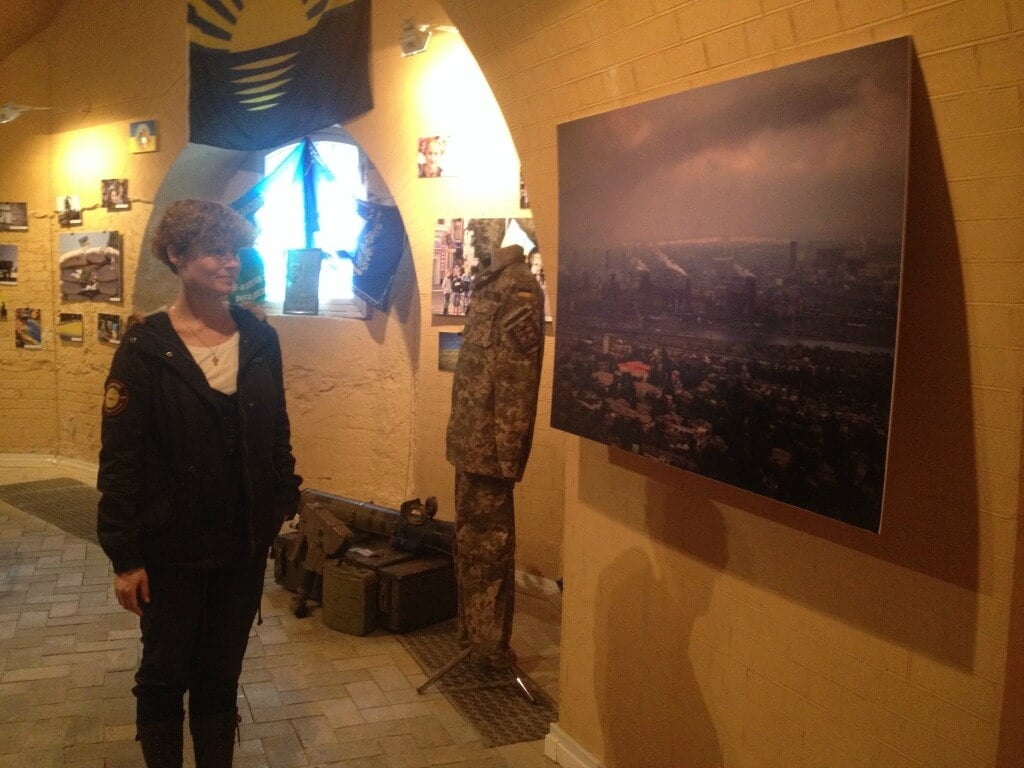
Photo: EMPR
“To me it was a catharsis,” she continues. “I am Russian. My grandfather also participated in World War II. When I saw those green men targeting me also being Russian, it was a period of shock for several months, I could not understand how it is possible. It might well be that his grandfather and mine were defending something together. Now when talking to adequate Russians I understand that it is not a war between Russia and Ukraine but a war between cowardice and honesty, normal Russians will never support such a disgusting thing. Same as Ukrainians, Latvians, Georgians, people of other nationalities”. A series of sad insights did not end here for Valya. “I had a boyfriend who is a Sevastopol native but lives in Bangalore. I thought we were about to get married and have children. His grandmother lives in Sevastopol. I called him suggesting helping her leave. He said: my grandmother fully supports what is going on, she said banderites will not pass. I said: we’re on different sides of the barricades then, goodbye.”
Casting a look at other exhibits in this section we notice a burnt enemy map that, according to Valya, a heavily-wounded militant did not manage to fully destroy with fire, a protocol of interrogation of another militant, militant IDs passed by a Ukrainian serviceman. “[The IDs] were his combat artifacts that he succeeded to get but he needed the uniforms. I suggested that I would buy him the uniforms and that he would give the artifacts to the museum and we’ll have a deal. He agreed,” says Valya.
A box with grenade launchers standing next to the artifacts became part of the collection due to the volunteers of Vostok-SOS organization. They brought these “souvenirs” back from one of their trips to the war zone. Exhibits that follow narrate the efforts that Mariupol’s patriotic community and the city’s military defenders undertake to preserve and reinforce the fragile peace. We see photos and placards of pro-Ukrainian rallies abundant in yellow-and-blue, flags of military brigades defending the city, military uniforms that Valya’s friend and Mariupol defender has generously donated to the exhibition.
The most dramatic part of the exhibition according to Valya is its section dedicated to the shelling of Vostochny district. On 24 January 2015 rockets launched from the territories controlled by Russian-backed militants hit Mariupol’s eastern areas, mostly residential killing 30 civilians and injuring over 100.
When the shelling started Valya was in the central part of Mariupol. “The building was shaking, the windows were rattling. I went to the office of Novy Mariupol and we read on the internet that the city was being shelled. I called my friends in the military asking if it was true. They confirmed and told me to go and stay in the shelter,” says Valya. When asked if she followed the advice she gives us a short smile. “Well, a journalist crew was sitting in front of me. I told them: guys, let’s take a taxi and go to Vostochny [district]”. By the time they arrived the shelling had already stopped. “We made a piece of reportage there, a very valuable one that included testimony of a witness. When we arrived there was fire, smoke, flesh, blood. It was very scary. There were a lot of those “lost” elderly people in shock who did not know where to go. There was a man running around with hamsters in cages, there were people carrying their stuff. There were also many inadequate people, so-called “vatnyky” who were walking the streets and chanting that the Ukrs [Russian contemptuous word for Ukrainians – edit.] had fired upon themselves,” remembers Valya. On their way back a destroyed yellow building caught their eye and they stopped to picture it. While Valya was taking pictures an elderly man ran towards her saying he wanted to speak about what he had witnessed and asked to turn the camera on. “I switched on the camera, he told me where he was at the moment and where the rockets came from. He said: for sure they came from the side of Novoazovsk [militant-held area – edit.]. We get back to the taxi, the journalists pull out a canteen of whiskey and we bring our high-strung nerves to more or less relaxed state. Back in the office of Novy Mariupol we immediately upload this video on internet, I call all my journalist friends. The video gets to the OSCE, to Canada and gets a serious resonance. This video turned to be an unassailable proof, the other side was not able to contest the testimony of that person. I would like to thank him. It was what is called “information warfare”.
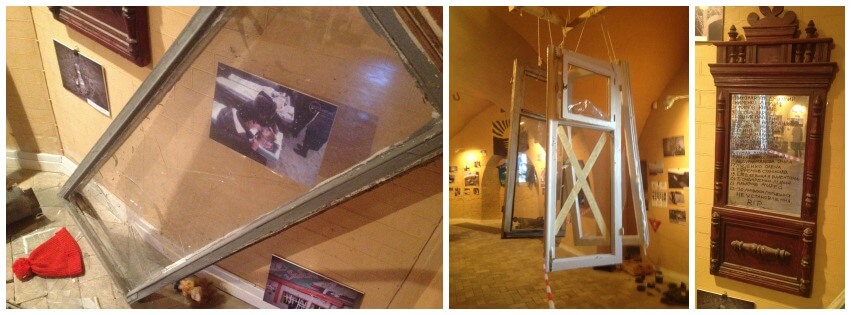
Photo: EMPR
Objects symbolizing the tragedy at the exhibition are broken windows. Several window pieces are tied together and are hanging from the ceiling. Pieces of the broken glass are laying on the floor. “Being the witness to how Vostochny [district – edit.] was shelled, the symbol of Vostochny were broken windows, thousands and thousands of broken windows, broken glass. So we decided to hang the windows here,” says Valya. “When I come close I feel at least a little the atmosphere that was there. People of Mariupol who were there also confirm it.” The vintage wooden mirror on the wall has a list of the victims’ names written on it with a black highlighter. Valya explains that she found the mirror safe and sound in the middle of a destroyed house that was hit in the shelling.
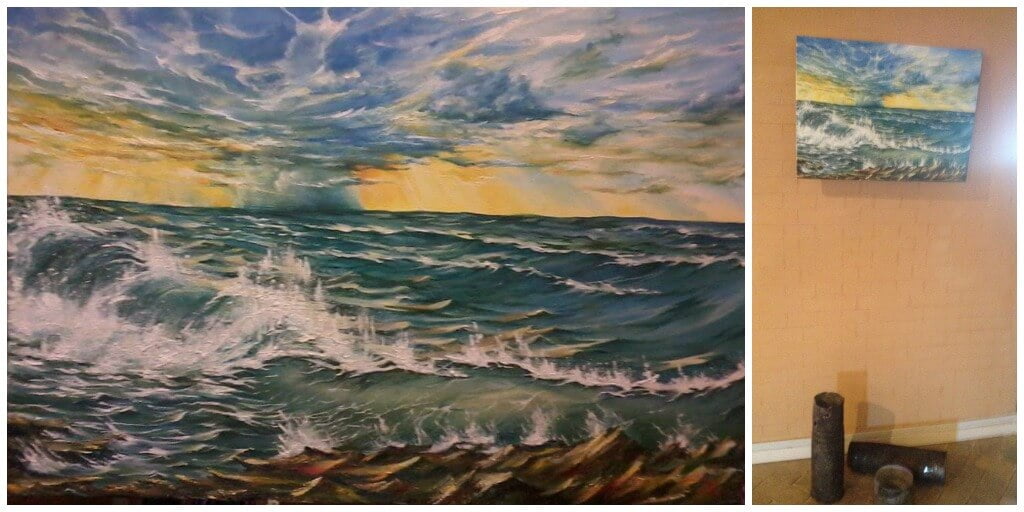
Painting by marine commander Captain first rank Andriy Andrey on duty outside Mariupol, part of the exhibition. Photo: “Mariupol – the city that is defending itself” FB event / EMPR
The exhibition’s final section is made up of children’s drawings for Ukrainian servicemen – mostly in bright colours, with wishes of victory and words of gratitude. It is the expression of hope for Mariupol’s bright and peaceful future in yellow and blue. Smerch rocket lying here on the floor reminds though that such a scenario is under threat. “Smerch is a scary element here, at the same time there’s a thin shield of children’s drawings and letters. It is actually granite of a kind,” says Valya. Media reported cases when Russian-backed militants were sending inflammatory sms, phoned up to intimidate the kids who wrote letters or sent their drawings to the soldiers. Because they take it seriously, she adds. “Children, one may say, are the angels’ hundred. With their wings and pure hearts they cover our warriors and support them morally.”

Photo: EMPR
The exhibition’s artifacts were being collected as things were happening. Valya says they faced no problems arranging them into an exhibition, “we started setting it up and the exhibits took their places as if by themselves, we did not take great pain to arrange them,” she continues. “This exhibition is an important element of the information war,” says Valya. “It shows Kyiv residents and people from other cities who come here but who have never been to Mariupol what Mariupol is like, what it is like to defend the city, to see the results of shelling, bodies of those killed in the shelling. I hope the exhibition will make people open their eyes on what the city went through to save itself as part of Ukraine.”
The exhibition “Mariupol – the city that is defending itself” is open until 31 May at the Kyiv Fortress (24A Hospitalna).
Tags: Culture
